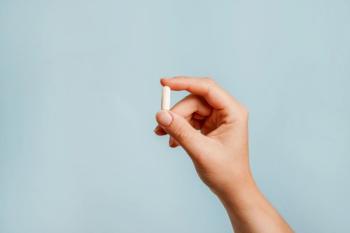The use of continuous glucose monitoring (CGM) has created a large-scale model for tracking lifestyle data and improving mortality in patients with diabetes. With the use of CGM data, patients can track blood glucose levels and adjust lifestyle behaviors in real time.
“Somewhere between 20% [and] 25% of people, so 50 [to] 70 million people in the US, are wearing some sort of wearable device,” stated Michael Snyder, PhD, in his session titled “Integrating Wearable & Behavior to Improve Metabolic Health.”1
Key Takeaways
- Michael Snyder, PhD, and Peter Reaven, MD, shared their findings on CGM use for improving mortality in patients with diabetes and how wearable devices can establish regimented lifestyle models.
- Snyder's research showed how CGM data can highlight glucose curves, ultimately leading to data that can be easily interpreted for future lifestyle changes.
- Reaven's findings highlighted the use of CGM and how it reduced mortality rates in both patients with type 1 and type 2 diabetes, compared with individuals not using CGM devices.
Aside from CGM use for monitoring blood glucose levels in patients with diabetes, overall metabolic data has been much easier to track with the rise of wearable devices such as smart watches and rings. Demonstrating ease of use, Snyder presented his findings while wearing close to 7 different devices.
The session also featured Peter Reaven, MD, who discussed specific uses of CGM for improving mortality in a presentation titled “CGM and Mortality: Looking Far Beyond Glucose Control.”2
Both researchers highlighted the continuously improved technology integrated in everyday wearable devices and how those outcomes can improve mortality and promote an individualized improvement in lifestyle.
The Benefits of Wearable Device Data
One of the key goals of Snyder’s research was to use CGM to identify metabolic subphenotypes. Using patients’ glucose curves, CGM data is able to predict metabolic subphenotypes.
A patient’s glucose curve represents their change in glucose levels throughout a given time. In Snyder’s study, researchers examined the glucose curves of 36 individuals and found differences in each. Using those curves and CGM data, researchers were then able to establish metabolic subphenotypes, which created specific guidelines for each patient to establish various lifestyle changes.
For example, Snyder presented the various changes in glucose levels that a nutrition shake can create for patients using CGM. He showed study data that highlighted how levels can spike, lower, or plateau based on the individual. With the goal of keeping glucose levels low, these data can lead to individualized lifestyle changes, specifically eating habits in this case, as more and more data is recorded in real time.
Finally, Snyder discussed the benefits of CGM compared with coaching for large-scale improvements in health amongst patients with diabetes.
“I think it's very hard to scale things through coaches. This is how we’re trying to manage things now and that's just not scalable [to] millions and millions of people. We think these apps are the way to go and we think CGM plus apps will do this,” he said.1
With real-time CGM data, patients and providers can establish an individualized plan on how to interpret the data, use it to plan for a better lifestyle, and make appropriate changes in the future.
READ MORE: Increased CGM Utilization, Education Needed for Low-Income Communities
CGM Use Improves Mortality
In Reaven’s study, researchers found that the use of CGM in patients with type 1 or type 2 diabetes (T1D, T2D) can significantly reduce mortality compared with those who did not use a CGM device. Furthermore, they found that with more frequent use of CGM came a greater effect of mortality reduction.
Using Veterans Affairs electronic health record data from over 10 million veterans, researchers analyzed the variations in mortality between T1D and T2D patients using CGM, compared with those who did not use the device.
Researchers identified significant CGM benefits including reduction in HbA1c, which was persistent in patients with T1D; reduced episodes of hyper- or hypoglycemia; and reduced hospital admissions.2
They found a 50% reduction in mortality for patients with T1D and a 20% reduction in patients with T2D.
“When you think about the data that we're starting to accumulate with the use of CGM devices, I think [we're] starting to get to the point where we might feel more comfortable with this idea that this might really be a wonderful way to treat our patients in a real broad spectrum approach that can really change their life,” concluded Reaven.2
READ MORE: CGM Resource Center
For more on the 2024 Heart in Diabetes conference, check out our ongoing coverage.
References
1. Snyder M. Integrating wearable & behavior to improve metabolic health. Presented at: 2024 Heart in Diabetes Conference; June 7-9; Philadelphia, PA.
2. Reaven P. CGM and mortality: looking far beyond glucose control. Presented at: 2024 Heart in Diabetes Conference; June 7-9; Philadelphia, PA.
















































































































